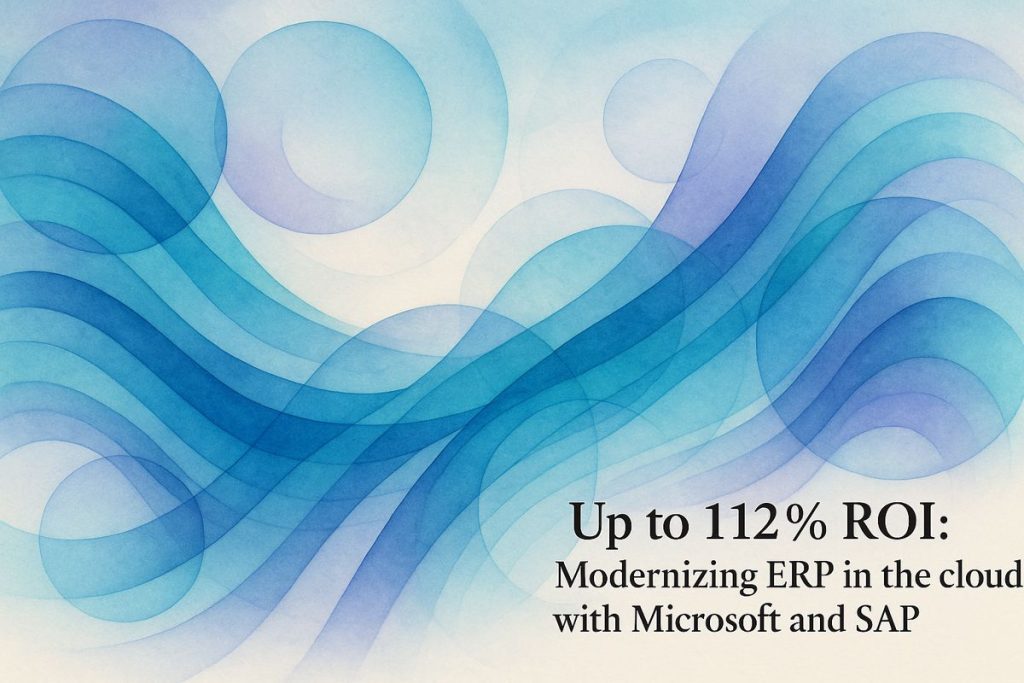Migrating SAP ERP to Microsoft Azure Cloud brings big benefits like stronger reliability, advanced AI features, and better security for strict industries. Companies can save lots of money and get their investment back quickly, sometimes in less than six months. The move is a big change, almost like shifting from an old, creaky building to a modern, smart one. But it’s not always easy—every little detail matters, and teamwork is key to making everything work. The future looks bright, with real-time data and smarter business tools lighting the way.
What are the key benefits of migrating SAP ERP to Microsoft Azure Cloud?
Migrating SAP ERP to Microsoft Azure Cloud offers enterprises several key benefits:
– Enhanced reliability with a 99.95% SLA for SAP workloads
– Advanced AI integration via SAP Joule and Microsoft 365 Copilot
– Improved compliance and security for regulated industries
– Faster provisioning and up to 50% cost reduction
– Accelerated ROI, with payback in under six months
A New Chapter (or, the ERP Palimpsest Unfolds)
Every so often, something happens in the tech world that makes you wonder if you’re witnessing a quiet tectonic shift or just the usual industry bluster, like so much digital confetti. This time, though, when Microsoft and SAP announced their turbocharge of cloud ERP migration efforts, I felt something different—a faint whiff of strong espresso and risk, and maybe, just maybe, a whiff of inevitability. The two titans are pooling their formidable arsenals to accelerate how enterprises leap from aging SAP installs—think humming server rooms and all-night patch marathons—to streamlined, AI-augmented cloud realities on Microsoft Azure.
Why now? Because the stakes in industries like life sciences and pharma—where compliance is less a box to tick and more a labyrinthine palimpsest of regulation—are higher than ever. The pair’s expanded initiative isn’t just a marketing gambit; it’s an answer to a years-long drumbeat from CIOs: “Give us migration without migraines.” Or, at the very least, without unexpected downtime at 2am on a Tuesday.
I remember a client in pharma who once described their legacy SAP stack as “the Leaning Tower of Pisa, but with more auditors.” The anxiety was palpable; one wrong move felt seismic. And now? The landscape is shifting, tectonically and quietly all at once.
The Nuts, Bolts, and Some Hyperspectral Oddities
Let’s get granular. The headline act is the SAP Business Suite Acceleration Program with Microsoft Cloud. (Name rolls off the tongue, doesn’t it?) In practice, this is a set of advanced migration tools, reference architectures, and joint support scaffolding—imagine scaffolding made of compliance protocols and SLAs instead of steel. With Azure now boasting SAP’s 99.95% Service Level Agreement for private SAP Cloud ERP, the platform’s reliability is less a boast and more a contractual fact (source).
SAP Business Suite Cloud ERP packages and the SAP Business Technology Platform (BTP) have also found a new home: the Microsoft Azure Marketplace. The integration parade marches on, with SAP Business Data Cloud and SAP Databricks set for full Azure integration by Q3 2025. Unified analytics, anyone? (Or is that just me getting excited about hyperspectral data unification?)
If you’re picturing a smooth, aromatic cup of coffee, that’s about right. But make no mistake: the migration journey is more like a complex pour-over—fiddly, precise, and occasionally spilling over the rim. Yet the promise is clear: AI-driven modernization, with less of the operational grit under your fingernails.
When AI Meets Regulatory Maelstroms
The pièce de résistance is, naturally, the AI infusion. SAP Joule, now cozily integrated with Microsoft 365 Copilot, unlocks business data flows that—at least in theory—should make even the most jaded process owner sit up and sniff the air. Imagine orchestrating supply chain visibility with the SAP Business Network Material Traceability solution on Azure: you’re suddenly tracking every shipment like a hawk with a hyperspectral lens, while the compliance folks mutter approvingly in the background (source).
There’s something almost synesthetic about the promise here. Picture dashboards glowing with real-time analytics; the reassuring hum of AI making predictions before you even know to ask the question. (Is it possible for software to smell like victory? Maybe not. But there’s a distinct whiff of optimism in the server room these days.)
I’ll admit, I once doubted that regulatory-obsessed industries would trust their crown jewels to the cloud. But I’ve seen organizations—Daimler AG, for instance—slash operational costs by 50% and shrink provisioning times from days to minutes. My skepticism faded, replaced by a prickly sense of excitement…and humility.
The ROI Riddle and the Human Factor
And what about the fabled business case? Turns out, it’s not a myth. Recent studies peg ROI at up to 112%—and that’s not some marketing fever dream, but a real number, at least according to VC ERP. With a 30% reduction in time-to-market and payback under six months, even the most hardened CFOs are arching one eyebrow in cautious approval.
But here’s the catch, the sensory grit: migrating to Azure isn’t flipping a switch. It’s more like moving an orchestra from a cramped rehearsal space to Carnegie Hall—every instrument (legacy system) has to find its place in the new acoustics. You’ll get agility and elasticity, yes, but only if you mind the details: security, managed services, and that ever-present specter of integration error #404.
A little anecdote: I once spent an afternoon troubleshooting a stubborn SAP integration, only to discover that an errant semicolon was the culprit. Ugh. The smallest things can become the biggest headaches—or, in retrospect, the greatest teachers.
A Tangle of Partners—and a Glimpse of the Future
No surprise, then, that Microsoft and SAP are leaning heavily on their global partner ecosystem. Global System Integrators, Independent Software Vendors, and a veritable zoo of acronyms (ISVs, GSIs, BTPs) have a
